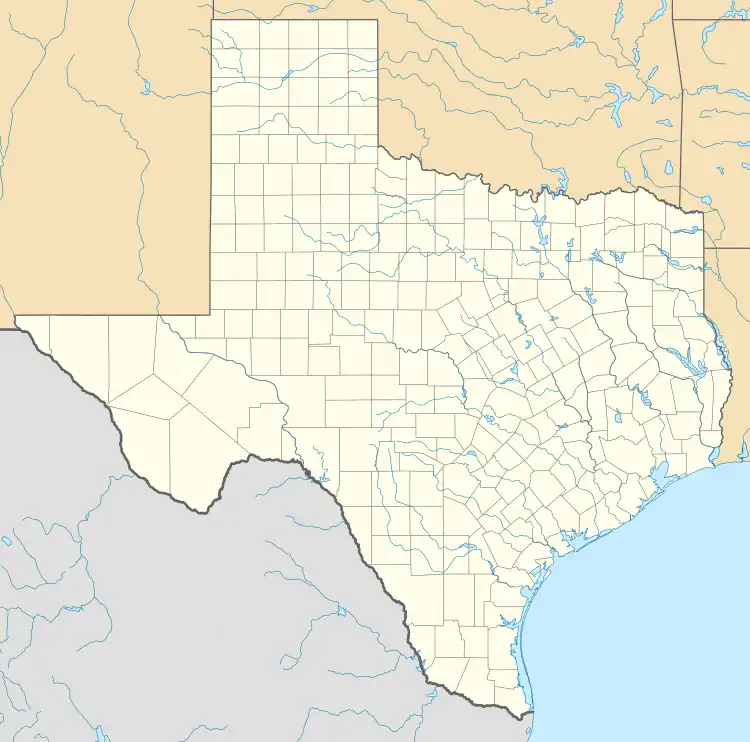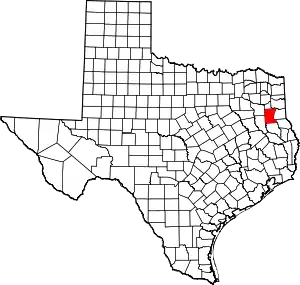Anadarko, Texas
Anadarko is an unincorporated community in Rusk County, located in the U.S. state of Texas.[1] According to the Handbook of Texas, the community had a population of 30 in 2000.
Anadarko, Texas | |
|---|---|
 Anadarko  Anadarko | |
| Coordinates: 31°55′42″N 94°52′35″W | |
| Country | United States |
| State | Texas |
| County | Rusk |
| Elevation | 400 ft (100 m) |
| Time zone | UTC-6 (Central (CST)) |
| • Summer (DST) | UTC-5 (CDT) |
| Area code(s) | 430 & 903 |
| GNIS feature ID | 1377936[1] |
History
The area in what is known as Anadarko today was first settled in the 1840s, in which one of them was Julien Sidney Devereux, who owned the Monte Verdi Plantation. A post office was established at Anadarko on November 12, 1849, and remained in operation until 1878, with William I. Barry as postmaster. It remained a farming community for the rest of the century. In the 1930s, Anadarko had several scattered houses and churches. Its population was 30 in 2000.[2]
Geography
Anadarko is located on Farm to Market Road 1662, 16 mi (26 km) southwest of Henderson in southwestern Rusk County.[2] U.S. Route 84 exits into Anadarko on Farm to Market Road 2753.
Education
In 1868, former slaves of Julien Devereaux's Monte Verdi Plantation settled in the surrounding community of Anadarko (Anadarco). Land for the church and community was provided by descendants of the Devereaux family. Church records indicate that in 1868 newly freed African Americans led by reverend Green Lewis and his wife Phoebe Devereaux, established the Anadarko Christian Church. The first public school for African Americans in this community was held in the Anadarko Christian Church.
In 1917, Julius Rosenwald, president of Sears, Roebuck and Company, and Booker T. Washington established the Rosenwald Fund to assist in the foundation of schools for African Americans in the South. With money from the Rosenwald fund ($900), public donations ($2100) and private contributions from students and parents ($600), the Anadarko Colored Rosenwald School was built in 1926. The building was a three-teacher school typical of the rural schools built by the Rosenwald foundation.
Over the years, the name of the school changed several times to Laneville Colored School to Allen High School (named for U.E. Allen, former principal) prior to merging with the Laneville Independent School District. The old classrooms were moved to expand the campus during the years 1967-69 to accommodate additional students after integration. The only remnant of this historic Rosenwald School is the pier and beam foundation where the gymnasium was erected.
Notes
- U.S. Geological Survey Geographic Names Information System: Anadarko, Texas
- Jasinski, Laurie E. (October 11, 2004). "Anadarko, TX". tshaonline.org.
